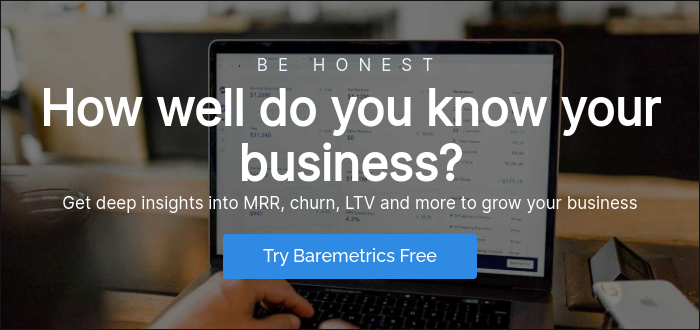Table of Contents

In 2018 we launched a product called Baremetrics Intros, which essentially helped companies and investors find each other based on their actual data instead of just who they knew. Three months later…we shut it down. It was, commercially, a failure. We just couldn’t get any investors (our target) to fork over any cash.
We opted to shut it down instead of going deeper down an already risky rabbit hole.
In that post about shutting it down, I hinted that I wished there was something we could do with it.
Functionally, we have this product that works beautifully and part of me wishes we could partner with someone who’s got deep ties to the investor world who could really make it work.
Just a few hours after I published that, my buddy Andrew Wilkinson at Tiny, sent me a message.

Why yes, Andrew. I’d love to sell you Intros!
He and I went back and forth over the course of a couple of weeks. I was initially torn on the idea as I knew it’d be a bit of a distraction for us to pull out all the code and make Intros a standalone, siloed app.
We nailed down what the deliverables would be and what it would take from the engineering team to pull it off and landed on a price: $100,000.
In true Tiny fashion, Andrew didn’t spend ages going back and forth trying to negotiate things into the ground. He gave the thumbs up on the $100,000 price tag and a couple of weeks later, we had an asset purchase agreement executed.
We got to work on decoupling the app and working with their team on transitioning all the code. A couple of months later, we finished the handoff and found ourselves with an extra $100,000 in the bank!
Why?
Now, why do this? Why distract the team for weeks? Why spend time on a one-off deliverable instead of improving our product with recurring revenue?
In 2019, one of our big goals was to have more cash in the bank. We were breakeven profitable, but operating that way left little margin for error. So, having more money in the bank gives us more room to take risks.
Spending a few weeks on this project gave us a very nice chunk of change towards that goal. So while it didn’t directly contribute towards recurring revenue, it did contribute substantially towards one of our big company goals.
When to sell off part of your product
Admittedly, it was an odd thing to sell off a part of our product. It’s not something I’ve heard of other companies doing, except for larger companies selling off an entire product or division. Doing this was unquestionably a big benefit to us and I wonder if it’s something other companies could do.
But when does it make sense? What variables need to align to make it feasible?
- Self-contained code — Your codebase needs to be well-organized and the feature/product should be pretty self-contained. If you find yourself needing to rebuild massive parts of it from scratch, it likely won’t be worth your time.
- Hyper-focused functionality — Does the feature/product focus on very specific functionality? It will translate much more easily to a buyer’s use-case if it’s not trying to do 100 different things.
- Outside your longterm strategy — If what you’re selling is functionally something you’d like to revisit down the road…don’t sell it. You don’t want to shoot yourself in the foot by blocking future plans due to non-competes.
- Favorable economics — And finally, the economics have got to make sense. Selling a partial feature/product will distract you from your core business for a time and you want it to unquestionably be worth it.
This is a big testament to the way Andrew runs Tiny. If he’d tried to drag the process out or get pushy on the numbers, we’d have just backed out and moved on.
We won’t ruin your life with months of unnecessary due diligence. We won’t renegotiate and grind you on terms.
If your team has spent substantial time on a major feature or new product and find that it’s ultimately a bad fit, I encourage you to explore the possibility of selling that part of your business. Many times it won’t make sense, but on the chance that it does, it can be a great way to get cash in the bank and recoup some of the time and resources you put in taking a risk on building that product in the first place!



